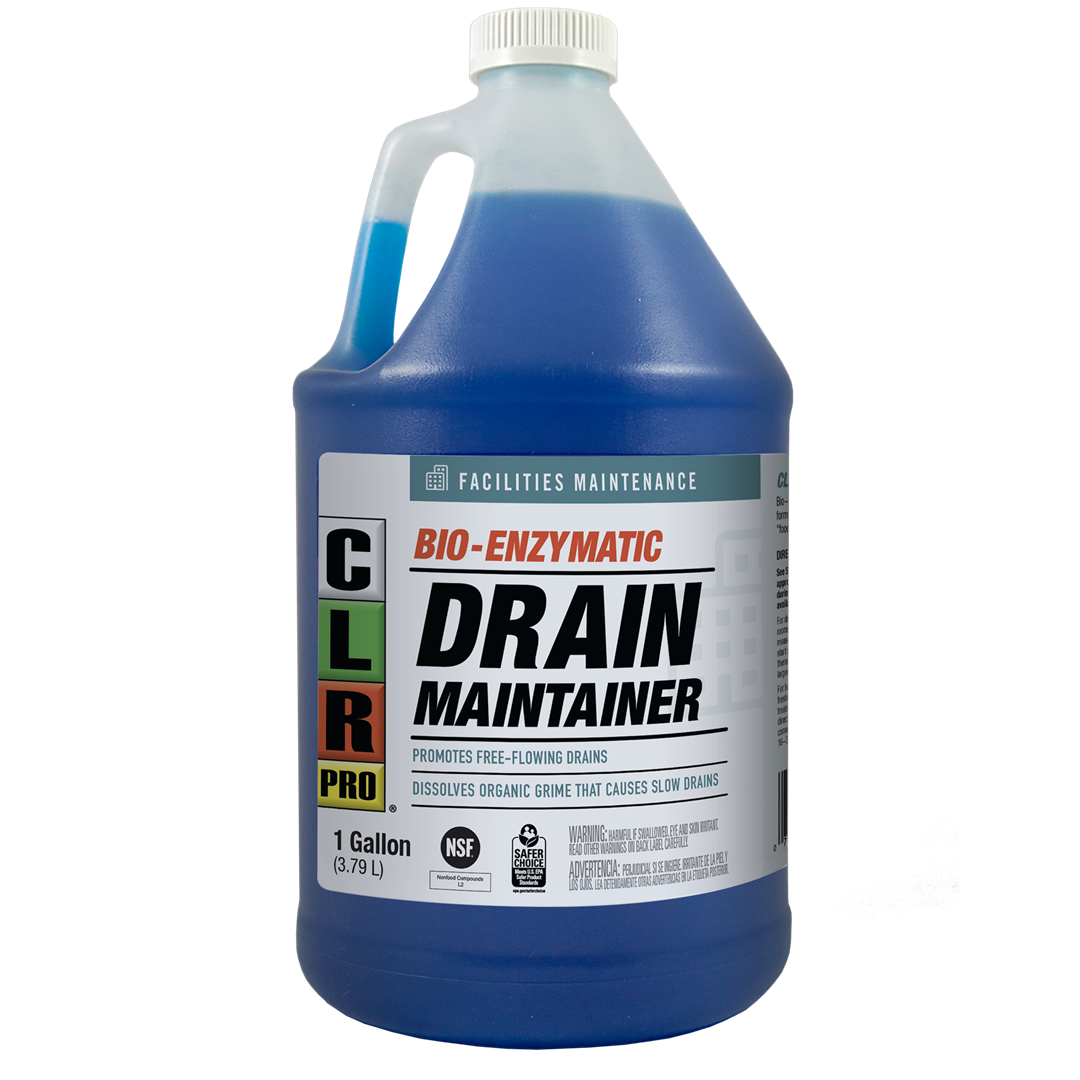
CLR PRO® Bio-Enzymatic Drain Maintainer
Prevents the accumulation of fat, oil and grease in grease traps & drains, and will keep drains flowing freely.
- Liquefies organic build-up in a slow running drain line, provides exceptional odor control & helps maintain free-flowing drains.
- Patented stabilization process allows for live, active bacteria to be deposited in drains and grease traps. This digests & degrades vegetable, animal and petroleum fats, oils & grease and won't harm pipes.
- Can be safely used in hotels, hospitals, bakeries & all restaurant kitchen drain lines & grease traps.
- Contains no emulsifiers, added enzymes or soaps and is safe for all plumbing.
- Part of the EPA's Safer Choice Program recognizing the product as a safer alternative to chemicals & contains no phosphates, ammonia or bleach.
- NSF Registered Category L2
Available In:
For use on these surfaces
- Copper
- PVC
How to use this product
For drain line maintenance in kitchens, bath and laundry rooms:
- 2 ounce per inch of drain diameter is the targeted measurement.
- For a 2" drain: Add 8 ounces per drain as a start up seeding dose.
- Then add 4 ounces per week for maintenance.
- Increase doses accordingly for larger diameter drains and feeder lines.
- For best results, start with a freshly pumped grease trap.
- Introduce 32 ounce shock treatment directly into drain line closest to the trap or directly into the trap if access.
- Thereafter, the recommended dosing is 16-30 ounce/day per 1,500 gallon trap.
- 500 gallon tank would require 1-2 pints per week
- Up to 3,000 gallon tank = 1-2 quarts per week
- Above 3,000 gallons = 2-3 quarts per week.
Featured Video
Product ingredients



| Water | Dilutent: CAS #7732-18-5 |
|
|||
| Dilutent: CAS #7732-18-5. Reverse Osmosis (RO) is a water treatment process that removes contaminants from water by passing the water through a membrane, (filter), where contaminants are filtered out yielding more pure quality water. | |||||
| Sodium Nitrate | Corrosion Inhibitor: CAS #7631-99-4. |
|
|||
| Corrosion Inhibitor: CAS #7631-99-4. It can be used as an additive in industrial greases, as an aqueous solution in closed loop cooling systems, and in a molten state as a heat transfer medium. It is also a common food preservative. | |||||
| Sodium Thiosulfate | CAS #10102-17-7 |
|
|||
| Monoammonium Phosphate | CAS #7722-76-1 |
|
|||
| FD&C Blue No. 1 | Colorent: CAS #3844-45-9. |
|
|||
| Colorent: CAS #3844-45-9. A blue dye used for foods and other substances. As part of the EPA Safer Choice Program, it has been evaluated and determined to be safer than traditional chemical ingredients. | |||||
| Pseudomonas Putida | CAS #68332-91-2 |
|
|||




